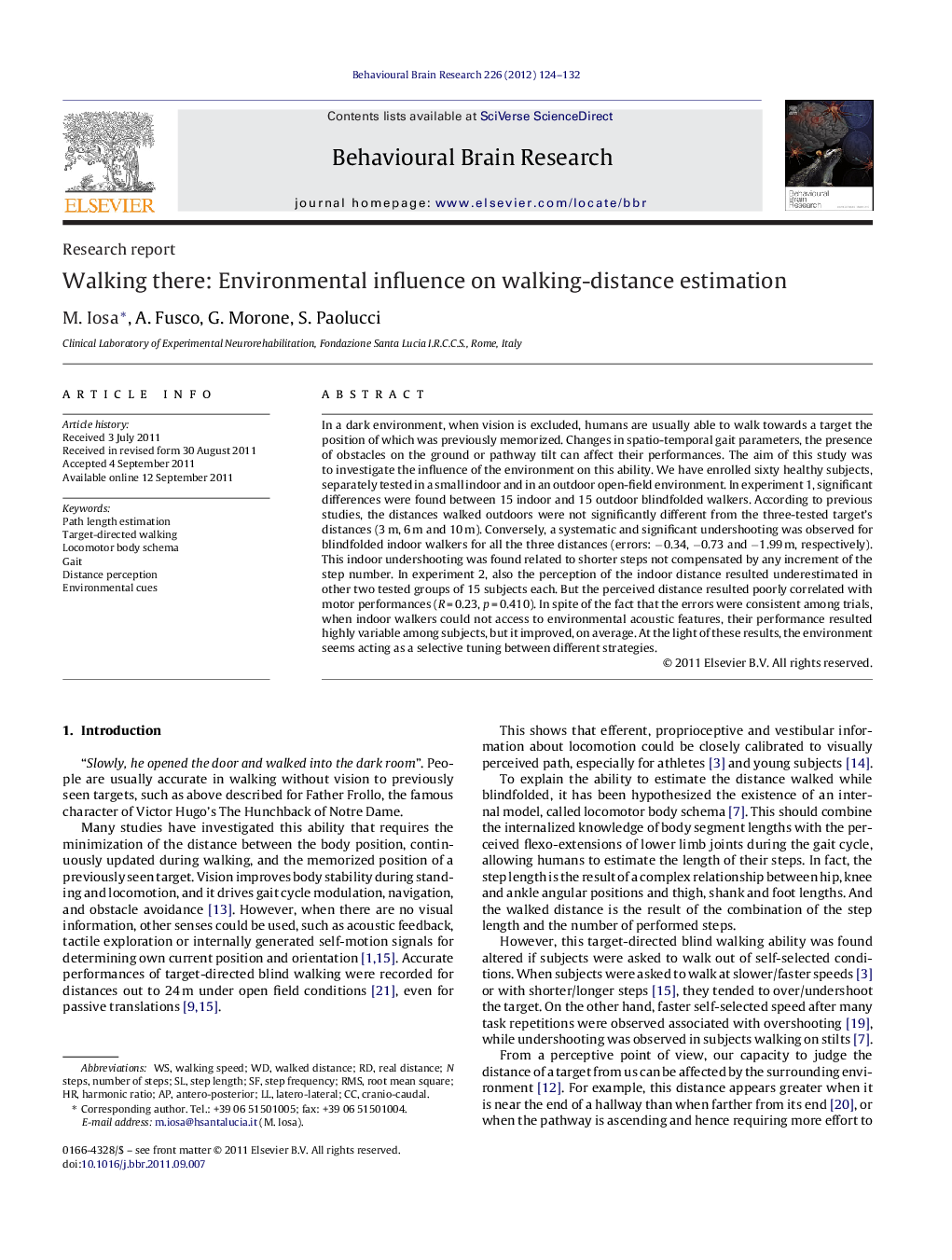| کد مقاله | کد نشریه | سال انتشار | مقاله انگلیسی | نسخه تمام متن |
|---|---|---|---|---|
| 4313501 | 1289999 | 2012 | 9 صفحه PDF | دانلود رایگان |

In a dark environment, when vision is excluded, humans are usually able to walk towards a target the position of which was previously memorized. Changes in spatio-temporal gait parameters, the presence of obstacles on the ground or pathway tilt can affect their performances. The aim of this study was to investigate the influence of the environment on this ability. We have enrolled sixty healthy subjects, separately tested in a small indoor and in an outdoor open-field environment. In experiment 1, significant differences were found between 15 indoor and 15 outdoor blindfolded walkers. According to previous studies, the distances walked outdoors were not significantly different from the three-tested target's distances (3 m, 6 m and 10 m). Conversely, a systematic and significant undershooting was observed for blindfolded indoor walkers for all the three distances (errors: −0.34, −0.73 and −1.99 m, respectively). This indoor undershooting was found related to shorter steps not compensated by any increment of the step number. In experiment 2, also the perception of the indoor distance resulted underestimated in other two tested groups of 15 subjects each. But the perceived distance resulted poorly correlated with motor performances (R = 0.23, p = 0.410). In spite of the fact that the errors were consistent among trials, when indoor walkers could not access to environmental acoustic features, their performance resulted highly variable among subjects, but it improved, on average. At the light of these results, the environment seems acting as a selective tuning between different strategies.
Figure optionsDownload high-quality image (208 K)Download as PowerPoint slideHighlights
► Surrounding environmental cues influenced target directed blindfolded walking.
► Outdoors, subjects were accurate, indoors they undershoot the target.
► Indoors, the number of steps was not varied among different conditions.
► Spatial gait parameters were affected by spatial layout features.
► Temporal gait parameters were affected by acoustic features.
Journal: Behavioural Brain Research - Volume 226, Issue 1, 1 January 2012, Pages 124–132